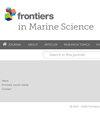PLDNet: real-time Plectropomus leopardus disease recognition
IF 3
2区 生物学
Q1 MARINE & FRESHWATER BIOLOGY
引用次数: 0
Abstract
InPLDNet:实时豹纹电蚤疾病识别
在豹纹电蚤中,弧菌病和Hirudo寄生虫病相对常见。及时发现这些疾病可以提高豹纹电蚤的存活率,防止其扩散。然而,早期疾病由于其体积小,特征微妙,难以区分。传统的人工识别方法依赖于个人经验和主观判断,导致诊断费时且容易出错。针对目前豹纹plectropus leopardus Disease Detection Network (PLDNet)的疾病检测与分类难题,本文提出了一种实时检测与识别方法,为养鱼场提供更快、更准确的诊断。PLDNet有两个显著的进步:首先,它采用了FocalModulation,增强了模型识别图像中关键疾病特征的能力。其次,引入MPDIoU (Minimum Point Distance-based Intersection over Union)算法进行边界盒相似性比较,优化损失函数,提高识别精度;本文还介绍了PLDD (plectroomus Leopardus Disease Dataset),这是一个新开发的数据集,包括健康和患病标本的综合图像。PLDD解决了该物种数据匮乏的问题,是推进海洋鱼类健康研究的宝贵资源。利用PLDD数据集对PLDNet进行了实证验证,并对包括YOLOv8-n、YOLOv9-m和YOLOv9-c在内的领先模型进行了基准测试。结果表明,PLDNet具有较好的检测性能,平均检测准确率为84.5%,召回率为86.6%,mAP@o.5为88.1%,实时推理速度为45 FPS。这些指标表明,PLDNet在准确性和效率方面都明显优于其他模型,为实时鱼类疾病管理提供了实用的解决方案。
本文章由计算机程序翻译,如有差异,请以英文原文为准。
求助全文
约1分钟内获得全文
求助全文
来源期刊

Frontiers in Marine Science
Agricultural and Biological Sciences-Aquatic Science
CiteScore
5.10
自引率
16.20%
发文量
2443
审稿时长
14 weeks
期刊介绍:
Frontiers in Marine Science publishes rigorously peer-reviewed research that advances our understanding of all aspects of the environment, biology, ecosystem functioning and human interactions with the oceans. Field Chief Editor Carlos M. Duarte at King Abdullah University of Science and Technology Thuwal is supported by an outstanding Editorial Board of international researchers. This multidisciplinary open-access journal is at the forefront of disseminating and communicating scientific knowledge and impactful discoveries to researchers, academics, policy makers and the public worldwide.
With the human population predicted to reach 9 billion people by 2050, it is clear that traditional land resources will not suffice to meet the demand for food or energy, required to support high-quality livelihoods. As a result, the oceans are emerging as a source of untapped assets, with new innovative industries, such as aquaculture, marine biotechnology, marine energy and deep-sea mining growing rapidly under a new era characterized by rapid growth of a blue, ocean-based economy. The sustainability of the blue economy is closely dependent on our knowledge about how to mitigate the impacts of the multiple pressures on the ocean ecosystem associated with the increased scale and diversification of industry operations in the ocean and global human pressures on the environment. Therefore, Frontiers in Marine Science particularly welcomes the communication of research outcomes addressing ocean-based solutions for the emerging challenges, including improved forecasting and observational capacities, understanding biodiversity and ecosystem problems, locally and globally, effective management strategies to maintain ocean health, and an improved capacity to sustainably derive resources from the oceans.
 求助内容:
求助内容: 应助结果提醒方式:
应助结果提醒方式:


